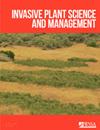公民科学和土地使用数据提供了对哈德逊河流域入侵河岸植物组成的深入了解
IF 1.3
4区 生物学
Q3 PLANT SCIENCES
引用次数: 0
摘要
河岸带的入侵植物会对流域的特征和质量产生负面影响。为了支持流域管理计划的制定,促进公众对河岸地带价值的认识,莫洪克保护区建立了一个自愿监测项目,调查入侵物种的地点。在2017年至2019年期间,公民科学家反复调查了纽约哈德逊河谷的20个地点,调查了10种入侵植物物种:紫松草(Lythrum salicaria L.)、芦苇(Phragmites australis (Cav.))。指标。[ex Steud],多花玫瑰(Rosa multiflora Thunb.),大蒜芥末[Alliaria petiolata (M. Bieb.)]。卡瓦拉和格兰德],金雀花(Hesperis matronalis L.),日本虎杖(Polygonum cuspidatum Siebold & Zucc.),酒莓(Rubus phoenicolasius Maxim.),小檗(Berberis spp.),日本高脚草[Microstegium vimineum (Trin.)]。加缪[A. Camus]和亚洲的苦瓜(东方的苦瓜,Celastrus orbiculatus Thunb.)。我们发现,在靠近铺筑道路和流域面积越大的地点,检测到的目标物种数量越多,而随着流域林地比例的增加,检测到的目标物种数量越少。我们的分析结果突出了整个哈德逊河流域目标入侵物种存在的变化,突出了监测未来引入的地点和区域,并采取措施防止物种入侵。我们的研究结果突出了水生植物和非水生植物最相关的非生物因素的差异,强调了在制定河岸带入侵植物管理计划之前考虑物种生活史特征的重要性。我们对哈德逊河谷地区社区收集数据的案例研究使用了相对简单的监测协议,可以为其他地区促进志愿者参与入侵植物提供路线图。本文章由计算机程序翻译,如有差异,请以英文原文为准。
Citizen science and land use data provide insight into the invasive riparian plant composition of the Hudson River Valley watershed
Abstract Invasive plants in the riparian zone can negatively affect the characteristics and quality of a watershed. To support the development of a watershed management plan and foster public appreciation of the value of the riparian zone, Mohonk Preserve established a volunteer monitoring program surveying sites for invasive species. Between 2017 and 2019, citizen scientists repeatedly surveyed 20 sites in the Hudson River Valley in New York for 10 invasive plant species: purple loosestrife (Lythrum salicaria L.), common reed [Phragmites australis (Cav.) Trin. ex Steud], multiflora rose (Rosa multiflora Thunb.), garlic mustard [Alliaria petiolata (M. Bieb.) Cavara & Grande], dame's rocket (Hesperis matronalis L.), Japanese knotweed (Polygonum cuspidatum Siebold & Zucc.), wineberry (Rubus phoenicolasius Maxim.), barberry (Berberis spp.), Japanese stiltgrass [Microstegium vimineum (Trin.) A. Camus], and Asiatic bittersweet (oriental bittersweet, Celastrus orbiculatus Thunb.). We found that the number of target species detected was higher on sites closer to paved roads and with increasing drainage area size, while lower with higher percentages of forested land in the basin. Our analysis results highlight variation in the presence of target invasive species across the Hudson River Valley region, highlighting sites and areas to monitor for future introductions and take action to prevent species' invasions. Our results highlight differences in the most relevant abiotic factors for hydrophytes and non-hydrophyte species, underscoring the importance of considering species' life-history traits before the development of management plans for invasive plant species in the riparian zone. Our case study of community-collected data in the Hudson River Valley region using a relatively simple monitoring protocol can provide a road map for other regions fostering volunteer engagement with invasive plants.
求助全文
通过发布文献求助,成功后即可免费获取论文全文。
去求助
来源期刊

Invasive Plant Science and Management
PLANT SCIENCES-
CiteScore
2.20
自引率
9.10%
发文量
24
审稿时长
6-12 weeks
期刊介绍:
Invasive Plant Science and Management (IPSM) is an online peer-reviewed journal focusing on fundamental and applied research on invasive plant biology, ecology, management, and restoration of invaded non-crop areas, and on other aspects relevant to invasive species, including educational activities and policy issues. Topics include the biology and ecology of invasive plants in rangeland, prairie, pasture, wildland, forestry, riparian, wetland, aquatic, recreational, rights-of-ways, and other non-crop (parks, preserves, natural areas) settings; genetics of invasive plants; social, ecological, and economic impacts of invasive plants and their management; design, efficacy, and integration of control tools; land restoration and rehabilitation; effects of management on soil, air, water, and wildlife; education, extension, and outreach methods and resources; technology and product reports; mapping and remote sensing, inventory and monitoring; technology transfer tools; case study reports; and regulatory issues.
 求助内容:
求助内容: 应助结果提醒方式:
应助结果提醒方式:


